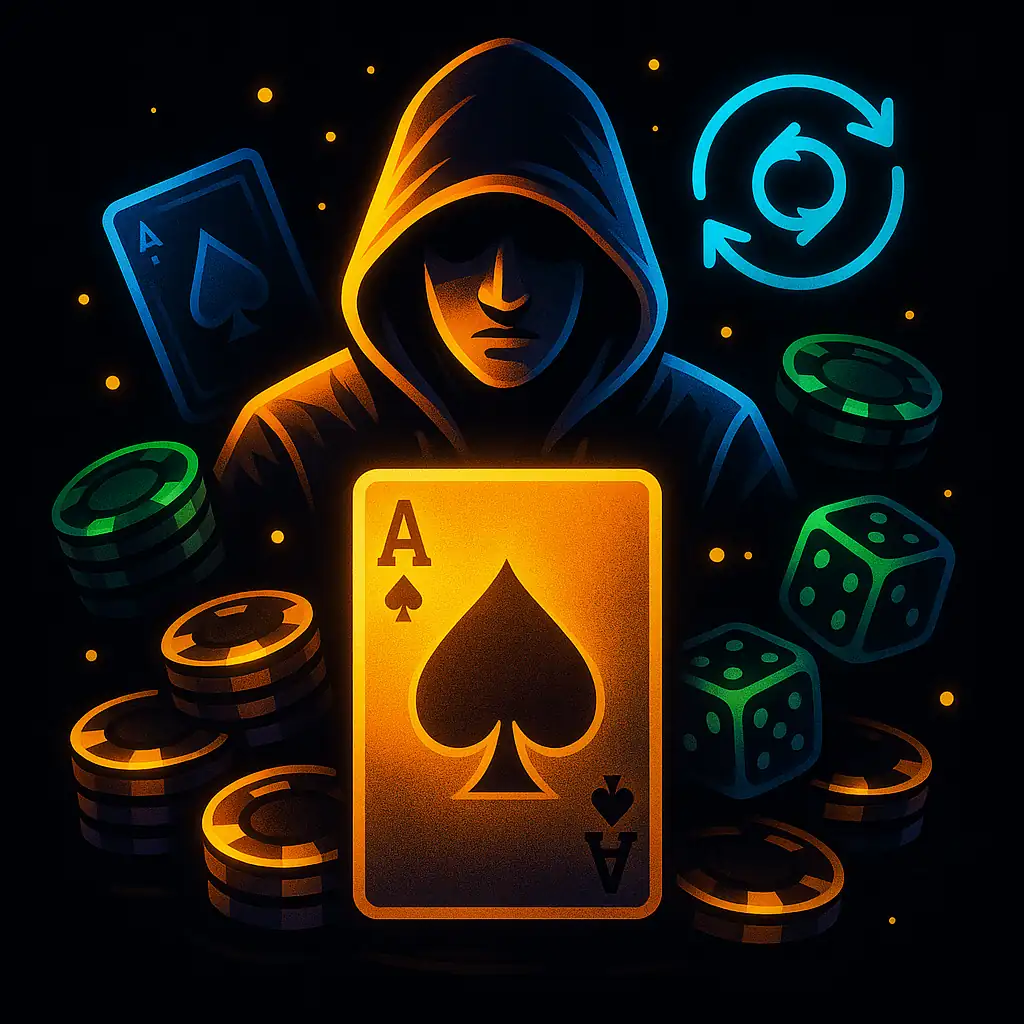Poker has always been about skill, bluffing, and a bit of luck. But in online poker, one question never goes away: is the shuffle really fair?
Traditional poker sites like PokerStars or 888Poker have been accused of rigged hands, insider cheating, or bots running wild. Players have to trust the operator’s RNG (random number generator) without any way to verify.
Web3 poker flips the script. Instead of “trust us,” it says: check the math yourself. Thanks to blockchain, smart contracts, and provably fair algorithms, players can finally sit at digital tables where the shuffle is transparent.
Let’s break down how Web3 poker works — from shuffling decks on-chain to verifying fairness in real time.
Quick Refresher: What Is Web3 Poker?
Web3 poker is online poker powered by blockchain tech. Instead of depositing fiat and trusting a central server, you:
- Play with crypto (ETH, BTC, USDT, etc.).
- Cards are shuffled by provably fair algorithms.
- Bets and pots are managed by smart contracts.
- Payouts are instant to your wallet.
Some projects run poker fully on-chain, while others are hybrids (mixing Web2 servers with Web3 fairness proofs).
Examples:
- Decentral Games (ICE Poker) → Metaverse poker in Decentraland, where NFTs act as buy-ins.
- Virtue Poker → Backed by ConsenSys and Phil Ivey, running poker on Ethereum with provably fair RNG.
- PokerDAO-style projects → Community-driven poker with DAO governance.
How Cards Are Shuffled in Web3
The biggest innovation is transparent RNG.
Traditional poker:
- A central server shuffles cards.
- Players can’t see how it’s done.
- You just trust the brand.
Web3 poker:
- Shuffling is done using cryptographic randomness (hashes, seeds).
- Each shuffle generates a proof.
- Players can verify the shuffle wasn’t tampered with.
Common systems include:
- Commit-reveal schemes → Each party commits to a random seed, then reveals later. The combined seeds create the shuffle.
- Chainlink VRF (Verifiable Random Function) → Trusted oracle generates randomness on-chain.
- Hash-based RNG → Shuffle tied to blockchain data (like the next Ethereum block hash).
Result: no rigging, no insiders stacking decks. The math is open for anyone to check.
How Pots & Bets Work
In Web3 poker:
- Bets go into a smart contract.
- The contract holds the pot securely.
- At showdown, the winner is paid automatically.
No waiting days for withdrawals, no frozen balances. If you win, crypto hits your wallet instantly.
Provably Fair = Player Power
The phrase you’ll hear everywhere in Web3 gambling is “provably fair.”
In poker, that means:
- You can verify the shuffle.
- You can confirm the pot was distributed correctly.
- No one — not even the casino operator — can secretly tilt the odds.
Some platforms even let you replay hands with cryptographic proofs to double-check fairness.
Why Web3 Poker Is a Big Deal
- Transparency → No more shady RNG. Players see the math.
- Instant payouts → No begging for withdrawals.
- Global play → Anyone with internet + wallet can join, no banking limits.
- Ownership → NFTs and tokens give players a stake in the ecosystem.
- Community trust → With fairness on-chain, the game is about skill again.
For regions like LATAM, Africa, and Asia, where online poker is either blocked or sketchy, Web3 poker offers a global, trustless alternative.
The Challenges (Still Real)
It’s not all wagmi yet:
- Gas fees → Fully on-chain poker can be slow and expensive.
- UX friction → Wallet pop-ups kill the vibe. Account abstraction will fix this soon.
- Liquidity → Player pools are smaller than giants like PokerStars.
- Regulation → Some governments treat poker as gambling, others as skill-based — unclear rules for crypto poker.
That’s why many Web3 poker platforms are hybrid models: gameplay happens off-chain (for speed), but RNG and payouts are provably fair on-chain.
Famous Poker Scandals That Web3 Solves
- UltimateBet & Absolute Poker (2000s) → Insiders used “superuser” accounts to see opponent’s hole cards. Millions stolen.
- Bot farms on PokerStars → Players accused sites of letting bots dominate tables.
- Withdrawal freezes → Players waiting weeks for payouts.
Web3 fixes these:
- RNG is verifiable, no secret insiders.
- Smart contracts enforce payouts instantly.
- Wallets mean self-custody, no frozen balances.
Numbers That Show the Shift
- Global online poker market = $9B+ yearly (Statista).
- ICE Poker (Decentral Games) has logged over $500M in poker volume since launch.
- Virtue Poker raised $5M from ConsenSys + pro players to bring blockchain poker mainstream.
It’s still early, but the numbers show real traction.
The Future: Web2 UX + Web3 Fairness
Soon, you won’t need to understand seeds, hashes, or RNG proofs. With account abstraction:
- Players log in with email.
- Wallet runs in the background.
- Shuffle proofs are still on-chain, but invisible to casual players.
That’s when millions of casual poker fans might shift from Web2 giants to Web3 tables.
Final Word
So, how does Web3 poker work?
It takes the classic game of skill and trust and rebuilds it on blockchain rails:
- Cards shuffled with transparent RNG.
- Pots held in smart contracts.
- Winnings paid instantly to wallets.
No insiders, no shady RNG, no frozen balances. Just poker, provably fair and borderless.
It’s not perfect yet — liquidity, gas fees, and UX still need work. But the foundation is solid: skill decides hands, not opaque code.
For players who love poker but hate trusting middlemen, Web3 poker is the ultimate table. The only question is: are you ready to sit down and play where the shuffle is finally fair?
Wagmi 🚀


